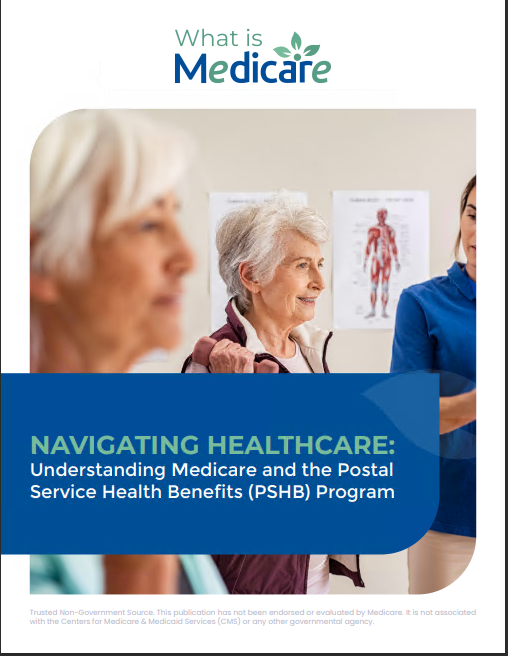Key Takeaways
-
Medicare has undergone several changes in 2025 that impact how much you pay, the benefits you receive, and how you access prescription drugs.
-
New rules in Medicare Part D, adjusted premiums and deductibles, and changes to Medicare Advantage plans could affect your budget and healthcare decisions.
A Fresh Look at Medicare in 2025
Every year, Medicare evolves to reflect shifts in healthcare needs, policy updates, and economic conditions. In 2025, there are key changes you need to know—especially if you’re already enrolled or planning to sign up. These updates range from cost adjustments to significant reforms in how prescription drug coverage works. Whether you rely on Original Medicare or have opted for Medicare Advantage, understanding what’s new helps you make smarter decisions.
Updates to Medicare Part A in 2025
Medicare Part A covers hospital care, and this year brings some changes in how much you might pay and what coverage looks like:
-
Hospital Deductible: The Part A deductible in 2025 is $1,676 per benefit period.
-
Coinsurance Costs: After day 60 in the hospital, coinsurance increases to $419 per day. Lifetime reserve days now cost $838 per day.
-
Skilled Nursing Facility (SNF): Daily coinsurance for days 21–100 in a skilled nursing facility is now $209.50.
While most beneficiaries don’t pay a premium for Part A, those who do face a premium of $518 per month if they paid Medicare taxes for fewer than 30 quarters, or $284 per month if they paid taxes for 30–39 quarters.
Medicare Part B Premiums and Deductibles Increase
In 2025, Medicare Part B—covering outpatient care and doctor visits—also sees updated costs:
-
Monthly Premium: The standard monthly premium has increased to $185.
-
Annual Deductible: The deductible now stands at $257.
Your total cost may vary depending on your income. If your income exceeds a certain threshold, you’ll pay more due to the Income-Related Monthly Adjustment Amount (IRMAA).
The Prescription Drug Coverage Overhaul
The most notable change in 2025 comes from Medicare Part D, which handles prescription drugs. This year marks a major shift that can help reduce your out-of-pocket expenses.
$2,000 Out-of-Pocket Cap
For the first time, Medicare Part D introduces a $2,000 annual cap on out-of-pocket drug spending. Once you reach this limit, you won’t pay anything more for covered medications for the rest of the year. This change eliminates the so-called “donut hole” that once created a gap in coverage.
Prescription Payment Plan Option
If you’re worried about paying a large amount early in the year, Medicare now offers a new option: spreading your prescription drug costs across monthly payments throughout the year. This allows for better budgeting and reduces the pressure of lump-sum expenses.
Medicare Advantage Plan Shifts
While the number of Medicare Advantage plans slightly decreased in 2025, the overall quality and range of offerings remain solid. Here’s what changed:
-
Stable or Lower Premiums: The average premium for Medicare Advantage plans has decreased slightly.
-
Increased Special Needs Plans (SNPs): More SNPs are available, offering tailored benefits for individuals with chronic conditions or financial challenges.
-
Supplemental Benefits Adjustments: Benefits like transportation and over-the-counter items are still common but offered by fewer plans compared to last year.
While these plans remain popular, it’s essential to check if the plan you’re enrolled in has made changes for 2025. Reviewing your Annual Notice of Change is a critical step each fall.
Reminder on Enrollment Windows
To adapt to these Medicare changes, you must know when you can make coverage decisions:
-
Initial Enrollment Period (IEP): If you’re new to Medicare, you can sign up during the 7-month period around your 65th birthday.
-
General Enrollment Period (GEP): Runs from January 1 to March 31 for those who missed their IEP.
-
Annual Enrollment Period (AEP): Occurs from October 15 to December 7, allowing you to change your plan.
-
Medicare Advantage Open Enrollment Period (MA OEP): From January 1 to March 31, you can switch Medicare Advantage plans or go back to Original Medicare.
Missing these windows can delay your coverage or cost you more.
Watch Your Income for IRMAA
The IRMAA surcharge continues to affect higher-income beneficiaries. For 2025, the income thresholds have increased slightly, with the surcharge applying to individuals earning over $106,000 and couples earning over $212,000 (based on 2023 tax returns). If you’re near these limits, be aware that your Medicare Part B and Part D costs will be higher.
Out-of-Pocket Costs Are More Predictable
Changes in 2025 aim to create more financial stability for Medicare beneficiaries. Here’s how your maximum expenses are more defined:
-
Part D Out-of-Pocket Max: Capped at $2,000.
-
Medicare Advantage MOOP: The maximum out-of-pocket (MOOP) limit is $9,350 for in-network services and $14,000 for combined in- and out-of-network.
-
PSHB Prescription Coverage: For Postal Service retirees under the new PSHB system, prescription drug coverage now mirrors the Part D cap.
This predictability can help you plan healthcare spending more effectively.
Personalized Notifications Help You Track Benefits
Starting mid-2025, if you’re enrolled in a Medicare Advantage plan, you’ll receive a personalized notice listing unused supplemental benefits. This includes dental, vision, hearing, or wellness benefits you haven’t yet used in the first half of the year. The goal is to encourage you to make the most of your plan.
Medicare and PSHB Integration for Postal Retirees
Postal retirees now fall under the Postal Service Health Benefits (PSHB) Program. As of 2025, those who are eligible for Medicare Part B must enroll in it to maintain their PSHB coverage. Some PSHB plans offer perks like premium reimbursements or waived deductibles when you enroll in both Medicare and PSHB.
This change does not affect non-Postal federal retirees under the FEHB program, but it’s a significant shift for USPS retirees.
What Stays the Same
Despite all these updates, many things remain unchanged:
-
Medicare eligibility age: Still begins at 65 (or younger for those with certain disabilities).
-
Standard benefit structure: Original Medicare continues to operate with Part A and Part B.
-
Coordination with other coverage: You can still use Medicare with employer coverage, retiree insurance, or medigap.
Don’t Forget Preventive Services
All Medicare beneficiaries continue to have access to preventive services at no cost when provided by a participating provider. These include screenings, flu shots, and your annual wellness visit. While costs around other services may shift, these preventive options remain fully covered.
Timely Advice Matters More Than Ever
Given the scope of changes in 2025, it’s smart to review your current plan and see how it aligns with your medical needs and financial situation. Whether it’s managing new prescription drug rules, understanding PSHB requirements, or anticipating income-related surcharges, proactive planning can help you avoid surprises.
Adjusting to Medicare’s New Look in 2025
Navigating Medicare in 2025 means staying on top of the new rules and adjusting your plan choices accordingly. The changes to prescription drug costs, out-of-pocket caps, and coordination with other programs like PSHB all shape how you manage your care. If you have questions or want help reviewing your options, speak with a licensed agent listed on this website for expert guidance.










